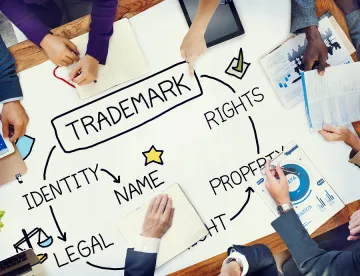While trademark protection can extend to sounds and smells (e.g., U.S. Reg. No. 5,467,089 for the scent of Play-Doh), a trademark is typically a word or design, or a combination thereof, used to identify products and services and further utilized to distinguish those goods and services from those of competitors. The most important function of a trademark is to cause your target consumers to make an exclusive association between the trademark and the products or services you offer.
Not all trademarks are equal. Certain trademarks are “strong,” and are therefore entitled to greater protection than “weak” trademarks. When you first select a trademark, there are important factors to consider that may impact the relative strength of the new trademark. “Strong” trademarks are distinctive, while “weak” trademarks are merely descriptive or generic.
From strongest to weakest, a trademark falls into one of the following categories:
Fanciful Marks
The strongest category is fanciful trademarks, which represent marks that are made-up words. Such a word has no other meaning besides its connection to the underlying goods or services. Fanciful marks are the strongest trademarks because there is a very low chance that another market actor will make a claim to or challenge your use of a word without any prior meaning as a trademark. Well-known brands that are fanciful trademarks include PEPSI, VERIZON, and EXXON.
Arbitrary Marks
An arbitrary trademark utilizes a word that already exists and has a defined meaning, but its defined meaning is not ordinarily used in connection with the underlying goods or services. The most famous example is APPLE used in connection with electronic products (and not its dictionary definition for the fruit.) Before that technology company was founded, there was little or no association of electronics with the word APPLE. Other brands that utilize arbitrary marks are AMAZON and AXE. Fanciful and arbitrary marks are the strongest marks that exist.
Suggestive Marks
The next category comprises suggestive trademarks, which convey or suggest some quality or characteristic of the underlying products or services but do not explicitly describe them. A suggestive trademark requires the consumer to make some extra thought or leap of the imagination to understand its relation to the underlying product or service. Examples of suggestive trademarks include COPPERTONE, suggesting the resulting skin tone of a consumer after use of suntan oil, and GREYHOUND, using the name of a fast dog to suggest fast travel services. Suggestive marks are second in strength to arbitrary and fanciful marks.
Descriptive Marks
Descriptive trademarks are ordinarily relatively weak. A descriptive trademark instantly communicates the underlying goods or services to the consumer by describing its nature, quality, or characteristics. For example, AMERICAN AIRLINES is descriptive because it immediately describes the company’s provision of airline services in America. SCHOLASTIC is descriptive of education, and learning from books. Descriptive marks are protectable only if they acquire distinctiveness, meaning the owner of the descriptive trademark has used it exclusively for a sufficiently long period for consumers to recognize it as a trademark rather than an ordinary word or phrase. Merely descriptive marks are not eligible for registration on the Principal Register without this showing of acquired distinctiveness.
Generic Designations
Generic names can never acquire distinctiveness and function as a trademark. For example, the trademark ICE CREAM is not registrable for ice cream products because it would unfairly foreclose others from using the common name ICE CREAM to describe ice cream products. A fanciful mark can fall into this category by a process known as genericide. Examples of once fanciful marks that are now generic include ESCALATOR, a trademark previously owned by Otis Elevator Company, and ASPIRIN, a trademark previously owned by Bayer.
While your business may have an easier time marketing and reaching consumers with a descriptive or weaker trademark, the value of a trademark and brand increases substantially if your business is able to successfully market a fanciful or arbitrary trademark. On the other side of the coin, there is the risk that your business overachieves, and a once strong trademark can lose all rights via genericide unless you carefully monitor to make sure the general consuming public and media are correctly using the mark. The owners of XEROX and VELCRO have thus far successfully preserved their monopolies in their marks by doing such policing.
Guidance from a trademark attorney to navigate the intricacies and nuances of the selection and adoption of a trademark is essential at each step of this process. This necessarily includes insight as to the clearance, availability, and challenges in enforcing a potential trademark prior to making a significant investment in the new brand.




 />i
/>i
